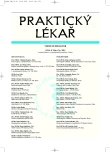Role of coronary calcium scoring in a spectrum of examination procedures
Authors:
J. Šochman 1; D. Vedlich 2; Peregrin; J.h 2
Authors‘ workplace:
Klinika kardiologie, Institut klinické a experimentální medicíny, Praha Přednosta: prof. MUDr. J. Kautzner, CSc.
1; Základna radiodiagnostiky a intervenční radiologie, Institut klinické a experimentální medicíny, Praha Přednosta: Doc. MUDr. J. Peregrin, CSc.
2
Published in:
Prakt. Lék. 2006; 86(12): 714-717
Category:
Diagnostis
Overview
The calcium scoring system offers a particular view on the uptake, as well as the deposition, of calcium ions into coronary artery atherosclerotic plaques. It is generally true that the higher the score, the worse the prognosis. Coronary calcium scoring is helpful in evaluating the impact coronary artery disease will have on a patient’s health in the future. It also can contribute in patient risk stratification, particularly in patients with an accumulation of known atherosclerosis risk factors or further development of proven coronary artery disease. Finally, calcium scoring methods can influence the selection of further examination procedures in cardiology - primarily coronary artery angiography indication. Acalcium score of less than 10 usually represents a minimal coronary artery lesion without any further clinical impact. A calcium score calculated above 400, however, suggests a large amount of coronary artery calcification and nearly always represents clinical indication to more sophisticated examination, including coronary artery catheterization angiography. Essentially a score near 400 or near a higher arbitrarily selected number is not conclusive. Calcium scoring is not recommended in acute cases.
Key words:
coronary calcium scoring, computed tomography, coronary artery disease, prognosis
Labels
General practitioner for children and adolescents General practitioner for adultsArticle was published in
General Practitioner

2006 Issue 12
Most read in this issue
- Severe lactic acidosis associated with acute renal failure in a diabetic patient treated with metformin – A case study.
- Role of coronary calcium scoring in a spectrum of examination procedures
- Restoration of hand movement following irreparable radial nerve palsy
- Neurosyphilis
